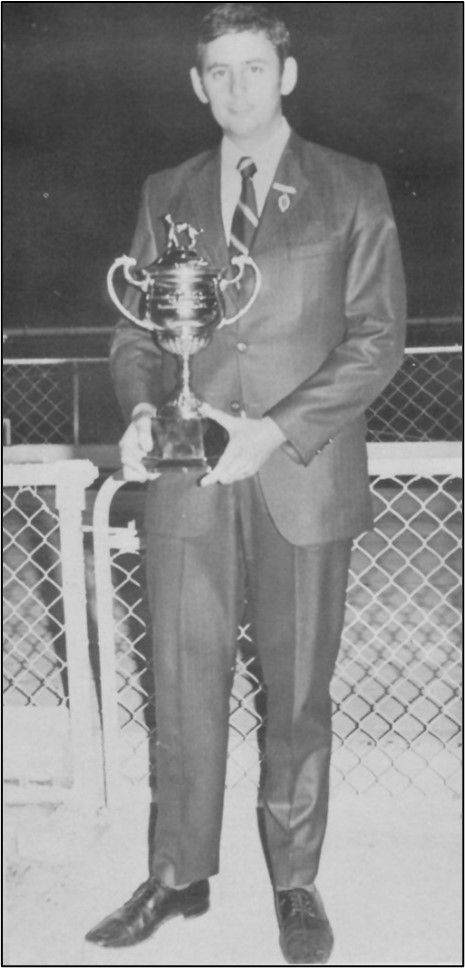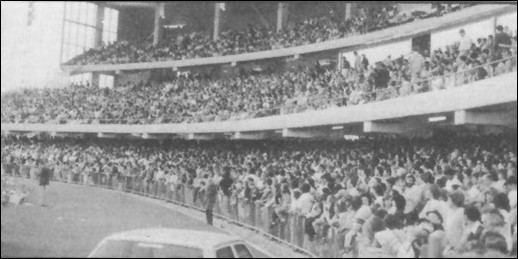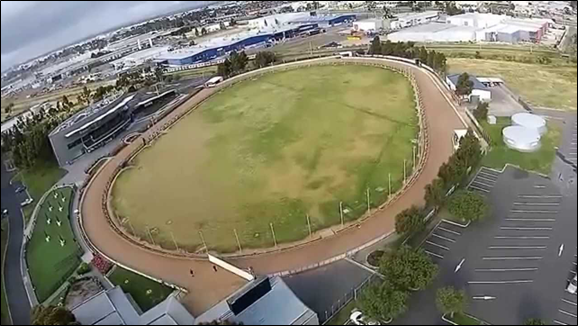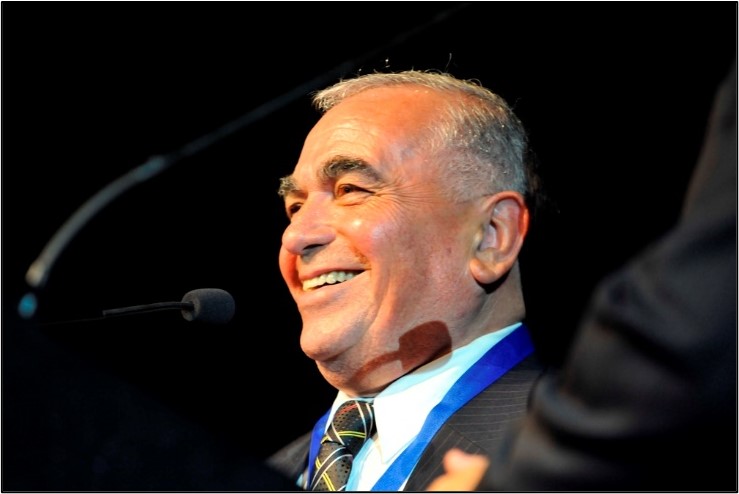LCA: Hume City Council
Chair: Barbara Backhoy
CEO: Scott Wuchatsch
Tel: (03) 9355 5222
Fax: (03) 9355 5255
Email: meadows@grv.org.au
Website: themeadows.org.au
Address: 80 Northcorp Boulevard Broadmeadows VIC, 3047
Postal: PO Box 103,Campbellfield, 3061
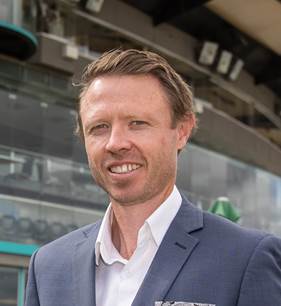
Scott Wuchatsch
Scott commenced at the Melbourne Greyhound Racing Association (The Meadows) in May 2022, continuing a long career in greyhound racing administration. He spent over 7 years in various roles at Greyhound Racing Victoria, before moving to Greyhound Racing SA for over a decade, as part of their executive leadership team in the role of Strategic Projects Manager.
In South Australia, Scott managed GRSA’s decade long infrastructure program, which included the successful Murray Bridge dual-track greenfield development and most recently the rebuild of the Angle Park racetrack. In addition to managing the infrastructure program, Scott was also a key player in GRSA’s long term strategic vision and at an operational level was responsible for track preparation and racing safety.
In terms of racing background, Scott developed a passion for racing in his teens through his father, who always seemed to have a share in a greyhound or horse through the years. Scott has had several roles as a greyhound racing participant over the years including owner, breeder and syndicate manager, which he believes were critical for him to understand the challenges that those in the industry face.
Away from racing Scott is a passionate snow skier, golfer and a lover of the outdoors, always looking to get away for the weekends with his wife Anna and their three boys – Ben 13, Tim 11 and Lachlan 8. Although weekends in recent times have mostly revolved around ferrying kids to and from sporting events.
Scott is excited by the opportunity the role at The Meadows presents, particularly the plans to renew the facility over the coming years. He is appreciative of a very supportive Board and a great group of dedicated staff which make the day-to-day running of the club a pleasurable experience.
Fun Facts - by Neil Brown
It was common knowledge for many years the two Metropolitan clubs were not the best of friends. The situation was caused by how everything started when licences were granted to two vastly different organisations the GOTBA and the NCA. In those early days and years through the 60’s and 70’s the clubs controlled most of their destiny. Separate Grading and Prizemoney. It could be vastly different as it was determined by the clubs, different ways of promoting their races and venues. However, in main it was a friendly rivalry most of the time each club hosted committee members of the opposite club as it is today. One night at Sandown it was not quite harmonious. Sandown Chairman Henry Harrison famous for his quote “My way or the Highway” got into a heated argument with popular MGRA Chairman Les Foran. To say the two gentlemen had different backgrounds would be an understatement. Henry took offence and was not going tolerate any more talk from his counterpart and ordered Security to remove him form the course. Now Les a resourceful character at the best of times scoured the packed Lightwood Road Carpark until he found an Electrical sub-contractors van with a long ladder. He removed it from the roof racks and placed the Ladder up against the outside fence. Scaling to the top he hurled abuse at Henry. He would not come down until removed after the local Springvale Police were summoned to put a stop to the incident. It’s fair to say their relationship remained testy for some time. I am happy to say as the current Chairman of Sandown and things vastly different to those times MGRA Chairman Eddie Caruana is one of my best friends and it has been my pleasant to have know him for as long as I have.
HISTORY OF THE MGRA
When the legislation for non- proprietary racing in 1955 provided for two metropolitan greyhound track licenses, one was issued to the National Coursing Association of Victoria and the other to the Owners Trainers and Breeders Association, which would add "Greyhound" to its name and become the Greyhound Owners Trainers Breeders Association (GOTBA). In 1955, the Melbourne Greyhound Racing Association (MGRA) was formed, thus separating it from GOTBA and registering as a company to hold the license to race greyhounds. However, membership at Board level of the two bodies continued to have a high degree of overlap. This, initial structure was similar to the overlap of the NCA and the NCA of Victoria.
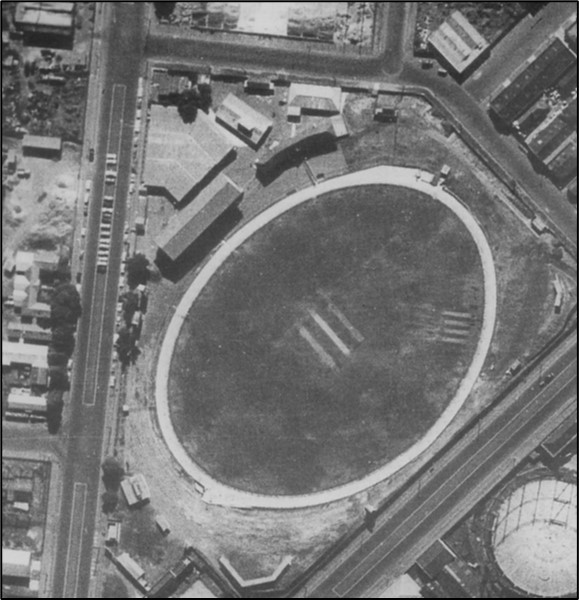
With a new license, but unable to afford the £35,000 ($960,000) for the purchase price of the old White City track, the MGRA needed a home. To avoid a recess in racing, the MGRA began racing at Maribyrnong paying a lease of £100 ($2700) a week while working on plans to establish at track at the football ground in Arden Street, North Melbourne. The Dog Racing Control Board (DRCB) also approved the MGRA to race at Sandown Park until it could move to Arden Street.
At a General Meeting of August 1956, the members of the MGRA were advised that negotiations for the move to North Melbourne were completed. Racing was to be conducted behind a tin hare lent by the GTOBA of New South Wales, to be paid for when possible.
Approval was given to raise £25,000 ($624,000) for the promotion of tin hare racing. Committee minutes for this period set this amount in context: the Secretary was to be paid £25 ($624) per week with a car allowance of 9d ($1) per mile, the mechanic and the assistant driver were to be paid £5 ($125) per meeting, £10 ($250) a week was approved for publicity, and Maurie Kirby’s amplifying system was hired for £3 ($75) a week. The MGRA was also making payments equal to the gate takings from one meeting a year into the Compensation Fund, which was required to reimburse the previous proprietary clubs for the loss of their licences. In 1957, this amounted to £571 ($14,250). Annual rent, payable to the Melbourne City Council was set at £7000 ($175,00) per annum.
The MGRA Committee also approved payment of £1,500 ($37,450) a year to building contractor and former prominent St Kilda football captain Harold Matthews to be Managing Director. He and fellow builder Stan Cleverley were to start the preliminary works at Arden Street The work, valued at £35,000 ($874,000), was financed by a debenture issue. To this day, many people remain unhappy about this arrangement, thinking that a large amount of material designed for the ground was redirected to other projects.
Times were tight to begin with and the Directors agreed to take turns to serve drinks at the bar to save on wages. But with MGRA Chairman Harold Matthews at the helm, there was no shortage of optimism with the debenture issue quickly filled. In addition. an order was placed for 80 bookies' boards. A night’s racing at Arden Street would soon be attracting 50-60 bookies per night. On the 11th September 1957, the new track at the North Melbourne ground was opened with stake money for the opening night set at £750 ($19,000).
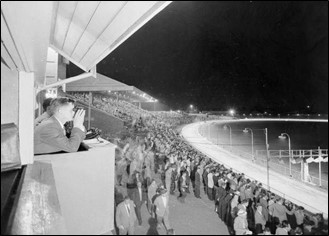
For the next few years Greyhound racing boomed and things looked rosy for the MGRA.
Then on 14th June 1961 the Melbourne City Council lobbed a grenade into the MGRA in the form of a rent increase from £7,000 ($175,000) a year to £9,500 ($237,000) a year. The MGRA believed a rise was extortionate. especially as they had removed a £1,700 ($42,400) liability at North Melbourne and spent in excess of £30,000 ($749,000) on improvements within a space of four years. Having paid £23,000 ($574,000) pounds in rent over three years. The golden goose finally choked. Within a week, negotiations had begun with the Olympic Park Trust (OPT) to move greyhound racing from the North Melbourne ground. The speed and effectiveness of these negotiations was due in part to the very good political and sporting connections of Harold Matthews.
The decision of the MGRA not to pay the rent increase received support in the Sporting Globe newspaper where it was argued that their revenue flow. Which appeared to have prompted the council’s rent increases, was being used to redeem the £35,000 ($873,000). worth of debentures which were used to finance the building of the track. It was argued that as the MGRA had no right to the assets they had created, the owners and trainers were entitled to get the money back. This was not to be and eventually the MGRA had to walk away from the £30,000 ($749,000), capital investment that they had made in Arden St.
However, on balance it was clear that the decision of the Melbourne City Council had indeed strangled the golden goose. In August 1961, the MGRA reported a loss of £694 ($17,300) for the first six months of the year and this was in contrast to the surplus of £11,300 ($282.000), for the previous year. The MGRA had received £50,000 ($1.16ml), in revenue during the six months in question and had expenditure of £51,000 ($1.19 ml).
Its main revenue streams were in admissions, bookies fees, bookmakers, turnover, race book sales and from trials and nominations.
The decline was attributed to increased stakes in a period highlighted by extremely bad weather and the provision for depreciation of leasehold improvements. However, overall, the MGRA was in a good financial position. It had £1,000 ($23 ,000) in the bank, £3,000 ($700,000) of accounts payable and had £6,000 ($140,000) in goods and furniture. The members of the MGRA endorsed the move to Olympic Park after the Directors had put in a counter offer to Melbourne City Council to pay rent at the present rate of £7,000 ($ 163,000) or 12.5% of the gate takings which was not such a great offer given that takings for the previous year were approximately £35,000 ($816,000) which equated to £4374 ($102,000).
Clearly, the MGRA was prepared to stand strong on the issue. Things were not improved by the fact that the MCC Parks and Gardens Committee was not prepared to see the MGRA delegation until after the council elections and the appointment of a new Committee. However, all did not go smoothly for the MGRA on another front. Despite Cabinet approval of the move to Olympic Park, the Metropolitan Board of Works rejected an application for the reconstruction of the oval and the grandstand on the basis that the running track at Olympic Park was for human beings and not for greyhounds. In addition, the amateur sporting bodies that tenanted the No. 2 oval strongly opposed the move of the greyhounds to Olympic Park.
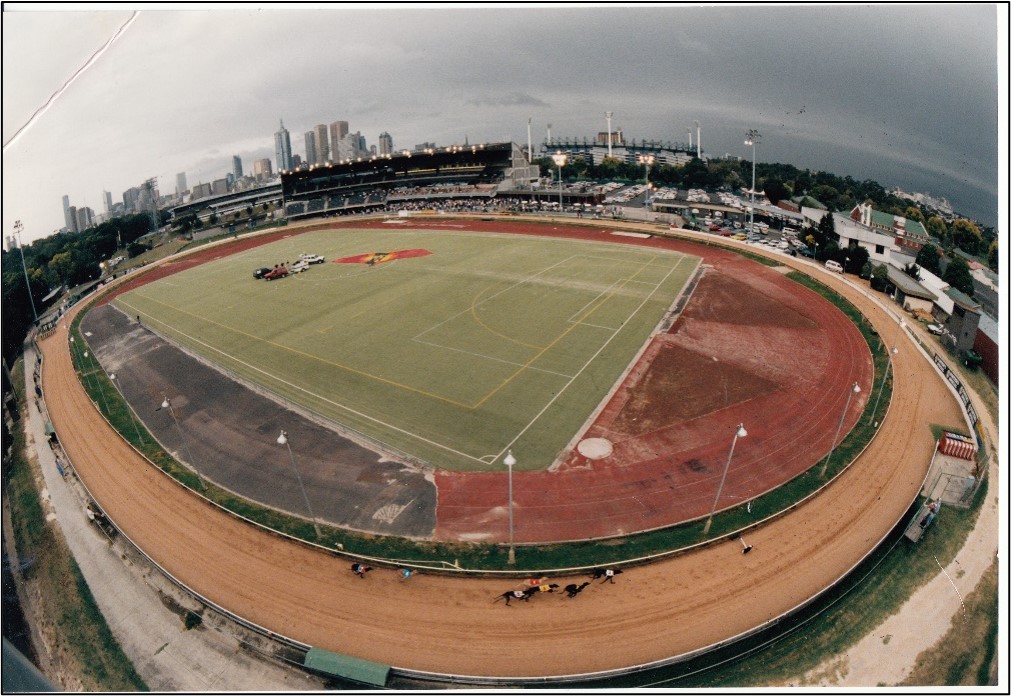
The MGRA was not deterred and at a subsequent General meeting, the recommendation to shift was endorsed by the members and preparations at Olympic Park began in earnest. In 1960, £7450 ($171,000) was paid to renovate the bar and the kitchen. This was to be repaid at £1000 [$23,000) per week. Early in September 1961, State Cabinet approved the MGRA plan to spend £50,000 ($11m) converting the No. 2 oval at Olympic Park in Swan Street for greyhound racing. The MGRA would pay annual rent of £5000 ($111,000) per year or 12.5% of gate takings whichever was the bigger, to the Olympic Park Trust. To do this, the club took on a £30,000 ($667,000) overdraft. The last meeting at North Melbourne was held on April 16, 1962.
In July of 1962, trials began at Olympic Park with races to be conducted over 560 and 800 yards. The MGRA announced that 68 bookmakers would field at meetings and that 30 selling windows would service totalizator punters for win, place and quinella betting. Fielding at Olympic Park required a bookie to pay a £500 ($11,000) commission. On Monday 20th August 1962, a crowd of over 6,000 braved cold weather for the opening and witnessed Chief Secretary Arthur Rylah cutting a white ribbon after the third race.
Admission was Gents 8 shillings ($9) and Ladies 5 shillings ($6). Every effort would now be made to regain patronage and before too long, Olympic Park began to get better attendances than those at North Melbourne.
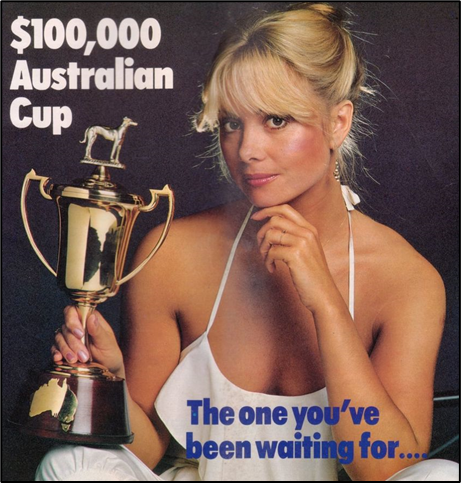
By the next year, the MGRA was running the premier feature Australian Greyhound Cup worth £4600 ($96,000). However, the club's financial success did not go unnoticed by some struggling provincial clubs. In 1962, the MGRA received a request of financial support from Wangaratta and in 1964 the Sale Club, asked MGRA to take over its financial commitments. While not able to meet these requests, MGRA was later able to give Ballarat £5,000 ($100,000) in stake money and also guarantee a £2500 ($50,000] loan at their bank. Later that year, it guaranteed a £40,000 ($80,000] overdraft for Warrnambool and a further £10,000 ($200,000) for the Ballarat Club. However, this generosity was short-lived and by 1968 the MGRA decided to stop subsidizing country clubs.

In these early days, the MGRA Directorate continued to be made up of GOTBA executive members but as time went on that membership changed and the two groups became more distant. Again, this situation mirrored that at Sandown with the NCA and the NCA of Victoria. Fred Abel who served for 17 years with the GOTBA, including six as President, remembers times when the GOTBA had to go cap in hand to the MGRA to get anything done. Abel later joined the MGRA Committee in 1982, becoming the Chairman of Directors in 1990, a position he would hold until 2001.
The MGRA was served over the years by a number of Presidents. Harold Matthews was President from 1956 to 1979. Bill Conroy then took over from Harold Matthews and was Chairman from 1979 to 1996, Les Foran then served from 1986 to 1990 with Fred Abel in the chair from 1990 during which time the club shifted again, this time to the Meadows.
However ongoing issues beset the MGRA as working with other sport codes at Olympic Park always led to friction over the right to decide when to race, when to have trials and control of the catering services.
There had been a problem with parking at the North Melbourne ground and this continued at Olympic Park as did the stealing and stripping of cars during race meetings. In the mid-eighties the GOTBA suggested that greyhounds could not see the lure so a longer arm with two bunnies was introduced. Fred Abel remembers that the two lures were not very effective, and the experiment was abandoned. A twin lure continues to be used in parts of NSW today and has been reintroduced in Victoria over last couple of years.
The early 1990s saw declining attendance numbers and finances mainly as a result of the opening of Crown Casino but fortunately three important milestones occurred for the MGRA. First was the joint venture with Sandown, which established the Tabaret gaming facility at Sandown and soon created strong cash flows for both clubs. The decision to join Sandown was made at the very last minute with Fred Abel exercising a casting vote to break a deadlock by the committee. His decision would have a lasting effect for decades to come. He had acted on the advice of Hall of famer Ron Nestor who suggested to Abel the M.G.R.A may be left behind Sandown if the Gaming venture was the success he was certain it would be. The second was that better tenancy terms were negotiated for Olympic Park with a new 15-year lease and the third that Marg Long became the Manager of MGRA in 1993 following Hec Caruana (1989 – 1991) and Peter Craig a former Director (1991 – 1993).
In 1992, Marg moved to Olympic Park to work as the racing manager, becoming general manager in 1993. Marg had successfully worked at both Traralgon and Geelong prior to joining the M.G.R.A.
The halcyon days of crowds of 5000 people attending the racing at Olympic Park were over. Marg inherited a club that was facing financial difficulties exacerbated by a stakes war that had broken out with Sandown.
Her Directors put an end to it by cutting the stake money at Olympic Park. But by late 1994, the Domain Tunnel, proposed to run along the back straight of the track, had become an issue of monumental importance that was to shape the future of the club. One Monday, she received a knock on the door and was told that the Citilink tunnel was going through and that the MGRA would need to vacate the Olympic Park site for three years. However, the Olympic Park's Trust
The initial plan was for MGRA to relocate temporarily during the construction of the tunnel. But after further discussions, the Club was told by the Olympic Park Trust (OPT) that it would not be able to return despite holding a further 13 years of lease of the site. Both the OPT and the Transurban/Citilink tunnel consortium believed that no compensation was
payable for the remainder of the lease to the MGRA. Eventually after some negotiation, $1m ($1.7m) was offered as compensation on the condition it relocated elsewhere on a permanent basis. Fred Abel visited close friend and Racing Minister Tom Reynolds, who also happened to be on the OPT. After many more negotiations, Citilink agreed to contribute $5.5m ($9.2ml), GRV $2.5m ($4.1 ml) and the Olympic Park Trust $3m ($5m) to the relocation.
With funds available, the MGRA began giving serious consideration to relocation options with Broadmeadows becoming an early front-runner location. For the second time in 30 years, the MGRA was on the move. With racing transferred to Sandown, Fred Abel, Marg Long and the MGRA Committee began to look for a new site for the MGRA. In a wide-ranging search across Melbourne they looked at 85 different possibilities before finally settling on a site in Camp Road, Broadmeadows.
The period leading up to the shift to what was newly named The Meadows was a difficult one.
During planning and construction, the club enjoyed good relationships with their builder, the MAB Corporation (MAB Corp). The new track took about 18 months to complete and construction was not without stresses and strains. The track is located on a high point of Melbourne and is subject to particularly strong winds. In the normal course of events, this presented problems for a highly unionised workforce which was a significant problem in maintaining continuity of work on a project with a very tight deadline. Marg remembers carrying many slabs of beer onto the site to maintain the motivation of the builders to complete the work on time. The final days were particularly hectic and at one stage she addressed the builders with a plea to complete the track on time.
The ever - persuasive Marg convinced the Builders Union to work round the - clock to complete the track for the opening night. Later, the club put on a special race night to recognize the work of the subcontractors and labourers who had worked on the site. Opening night was a stunning success with the Racing Minister Tom Reynolds, senior members of GRV and a crowd of 8000 people cramming into the new Meadows racetrack.
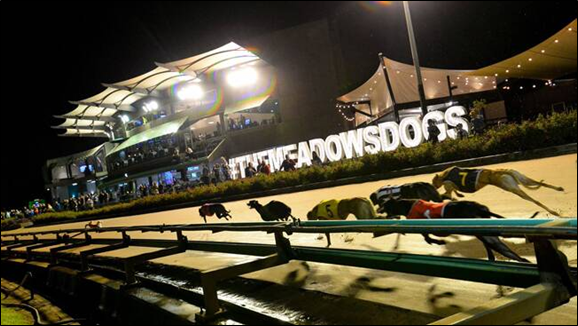
Since the shift to the Meadows there have been a number of significant events. In 1997, the first Annual General Meeting held at The Meadows showed that, despite the Club still being in financial difficulty, prize money increased. There has been a constant desire to broaden the funding base for the MGRA and hence in 1999, the corporate dining room was opened. The importance of the Tabaret at Sandown as a source of cash flow was re- emphasised with a plan to establish another Tabaret at The Meadows. In late 1998, after discussions with GRV, a site on the corner of Northcorp Boulevard was purchased with this objective in mind. Unfortunately, a change in Government policy on poker machine caps in the City of Hume caused the demise of this plan.
Fortunately, his expertise has not been lost, as he has remained on the committee since. The effervescent Eddie Caruana took over in 2001.
With a broadening sense of improving financial performance and social responsibility within the emergent local community, the Meadows became involved in Charity fund raising with the Dean Jones Walk for Leukaemia and the Royal Children's Hospital Good Friday Appeal raising $7,600 and $42,000 respectively. With Caruana's canny ability to blend attention to feature events, the needs of grass roots owners and trainers, and the development of the club as a family friendly community environment, the Meadows has prospered to become a shining light of greyhound racing in Victoria.
Marg Long retired in June 2017 it ended a golden era at The Meadows when Long, the only General Manager the venue has known, officiated her final meeting at the track she helped build from the ground up.
When Long walked out the door for the final time after 27 years at the helm of the Melbourne Greyhound Racing Association (MGRA), she must have felt a wide range of emotions, the most overwhelming being pride. “There’s definitely a sense of pride,” Long said.
“It was a big job moving from Olympic Park. Building the Meadows on virgin ground was a really great project to be involved in. “You don’t often get the opportunity in life to be involved in a project from scratch – very few people do – and it’s been very rewarding. The venue is quite spectacular today. “It gave me a fantastic grounding and I was fortunate to work with some outstanding people. The Project Manager, Andy Evans, was amazing, and so was Tom Reynolds, who was the Sports Minister at the time.” Diminutive in size but indefatigable in nature.
After taking the reins at the MGRA at a pivotal juncture in its history, overseeing the move from Olympic Park and the development of The Meadows to its opening in February 1999. From those very humble beginnings, The Meadows has developed into one of the world’s premier greyhound racing venues and is now host to 10 Group 1 events, highlighted by the rich Australian Cup Carnival and the Topgun. Among many accolades paid to Margaret on her retirement none meant more than her induction in 2016 into the Victorian Greyhound Hall of Fame.
From a racing perspective, the Australian Cup of 2003 entered the record books when Graeme Bate's tearaway leader Blackjack Tom was joined on the line by Max Burdiken’s Most Awesome to create the first dead-heat in a major race. In April 2003, a handslipping track was established for local owners and trainers. On a racing front, the Directorate revamped the format of the Australian Cup Carnival in 2003 to include a first night that is highlighted by the Temlee the Rookie Rebel and the Zoom Top as invitational feature events. The MGRA has also promoted now well proven group events such as the Silver Chief, the Maturity, the Hume Cup and the Silver Bullet. Now traditionally conducted on (horse) Melbourne Cup eve. Ashley Baker took over as General Manager at the Meadows. He now runs a highly successful operation, one that Marg molded into not only a greyhound racing club but a business operating in a complex and competitive market. Having a large modern dining room enables the Meadows to promote the club’s facilities to businesses and families in the local area. The strategy has proved successful as the dining room is booked out for most meetings.
In 2015 the club expanded in a major redevelopment that involved A major extension of both the upper and ground floor levels at the western end of the pavilion, creating greater function room capacity and enhanced disability access. It also included an extension of the current decking area at the eastern end of the pavilion including improved disability access, construction of enhanced function facilities on the extended deck, and Ground floor upgrades of the betting ring area and the MGRA administration offices. The extension of the main grandstand eased the demand on the dining room area. The alfresco type function room addition to the stylish new decking area allowed the club to cater for an extra 100 people. In addition to Coalition Government funding of $875,000 from the Victorian Racing Industry Fund, GRV will provide $1,150,000 with the MGRA contributing the remaining $250,000 towards the total project cost of $2,275,000.
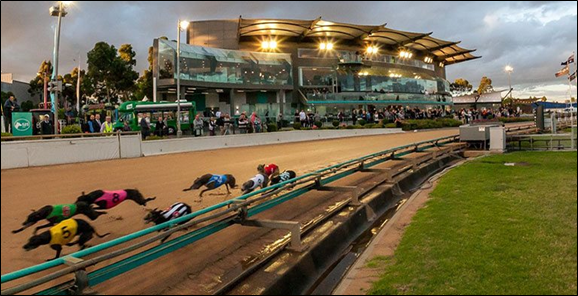
It’s been 17 years since Greyhound Racing Victoria (GRV) started one of the most memorable series of events on the greyhound racing calendar; The Great Chase. Since 2003 GRV has donated more than $600,000 to community organisations who care for intellectually or physically disabled people, and the event has been supported since 2008 by TAB. All Victorian greyhound clubs participate and invite their local community groups – clients and carers – to a special community day where they have the opportunity to win prize money. The final has been conducted at the Meadows in October since 2007 and is a huge day for the club.
In October 2019 the club was pleased to announce the opening of a new Galloping Yard facility at The Meadows. Available for use by Slipping Track members, the new area boasts a safe perimeter fence and beautiful soft surface, perfect for an off-leash gallop.
It is hoped that the area will benefit trainers who don’t have suitable facilities at home for their greyhounds to have a free gallop and will also double as a much-needed safe area for GAP adoptees to exercise their beloved pups. The MGRA is committed to assisting and providing returns to the greyhound racing industry, with the new Galloping Yard forming part of a broader initiative involving the installation of treadmills, hydrobaths & more. MGRA Chairman Eddie Caruana explained how this new facility falls within the Club’s future strategy. ‘We understand our responsibility within the industry to help ensure a sustainable future for our sport. By continuing to improve and add to our facilities we intend to become a ‘one-stop shop’ for trainers to utilise in years to come.”
The club also has in recent years introduced The Greyhound Community Grants Fund extends financial support to non‐profit organisations that provide quality programming in the areas of health, education, sport, recreation and community enhancement within the City of Hume.
The MGRA’s history has been one of many varied struggling periods. However, over the decades they have consistently provided top quality Greyhound Racing at three different venues and enjoy a very sound position in the sport for all participants Australia wide.
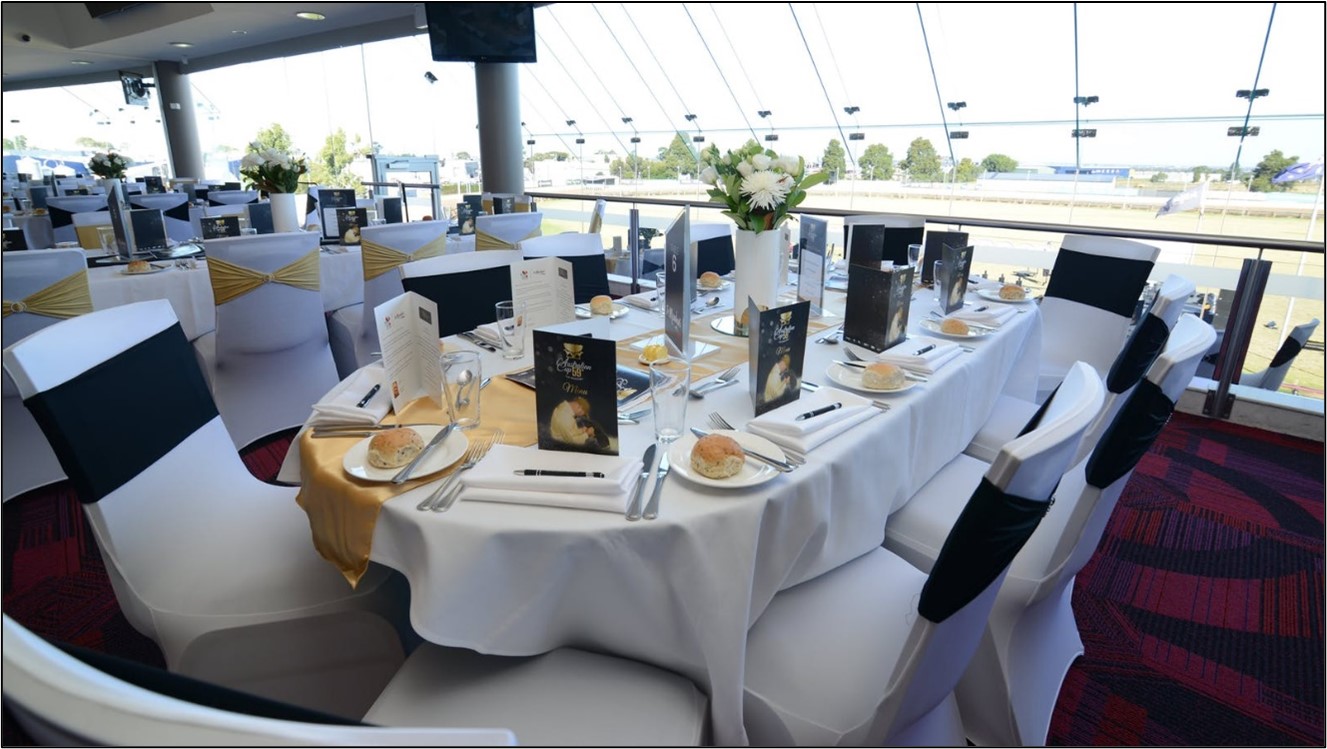
Club Presidents:
H T Matthews MBE 1956 – 1979, W Conroy OAM 1979 – 1986, L G Foran, 1986 – 1990, F G Abel 1990 – 2000, T J Davis 2000 – 2001, E F Caruana 2001 – Present.


 For the next few years Greyhound racing boomed and things looked rosy for the MGRA.
For the next few years Greyhound racing boomed and things looked rosy for the MGRA. The MGRA was not deterred and at a subsequent General meeting, the recommendation to shift was endorsed by the members and preparations at Olympic Park began in earnest. In 1960, £7450 ($171,000) was paid to renovate the bar and the kitchen. This was to be repaid at £1000 [$23,000) per week. Early in September 1961, State Cabinet approved the MGRA plan to spend £50,000 ($11m) converting the No. 2 oval at Olympic Park in Swan Street for greyhound racing. The MGRA would pay annual rent of £5000 ($111,000) per year or 12.5% of gate takings whichever was the bigger, to the Olympic Park Trust. To do this, the club took on a £30,000 ($667,000) overdraft. The last meeting at North Melbourne was held on April 16, 1962.
The MGRA was not deterred and at a subsequent General meeting, the recommendation to shift was endorsed by the members and preparations at Olympic Park began in earnest. In 1960, £7450 ($171,000) was paid to renovate the bar and the kitchen. This was to be repaid at £1000 [$23,000) per week. Early in September 1961, State Cabinet approved the MGRA plan to spend £50,000 ($11m) converting the No. 2 oval at Olympic Park in Swan Street for greyhound racing. The MGRA would pay annual rent of £5000 ($111,000) per year or 12.5% of gate takings whichever was the bigger, to the Olympic Park Trust. To do this, the club took on a £30,000 ($667,000) overdraft. The last meeting at North Melbourne was held on April 16, 1962. By the next year, the MGRA was running the premier feature Australian Greyhound Cup worth £4600 ($96,000). However, the club's financial success did not go unnoticed by some struggling provincial clubs. In 1962, the MGRA received a request of financial support from Wangaratta and in 1964 the Sale Club, asked MGRA to take over its financial commitments. While not able to meet these requests, MGRA was later able to give Ballarat £5,000 ($100,000) in stake money and also guarantee a £2500 ($50,000] loan at their bank. Later that year, it guaranteed a £40,000 ($80,000] overdraft for Warrnambool and a further £10,000 ($200,000) for the Ballarat Club. However, this generosity was short-lived and by 1968 the MGRA decided to stop subsidizing country clubs.
By the next year, the MGRA was running the premier feature Australian Greyhound Cup worth £4600 ($96,000). However, the club's financial success did not go unnoticed by some struggling provincial clubs. In 1962, the MGRA received a request of financial support from Wangaratta and in 1964 the Sale Club, asked MGRA to take over its financial commitments. While not able to meet these requests, MGRA was later able to give Ballarat £5,000 ($100,000) in stake money and also guarantee a £2500 ($50,000] loan at their bank. Later that year, it guaranteed a £40,000 ($80,000] overdraft for Warrnambool and a further £10,000 ($200,000) for the Ballarat Club. However, this generosity was short-lived and by 1968 the MGRA decided to stop subsidizing country clubs.
